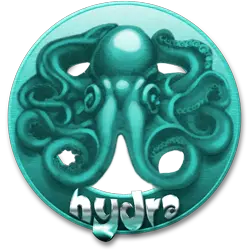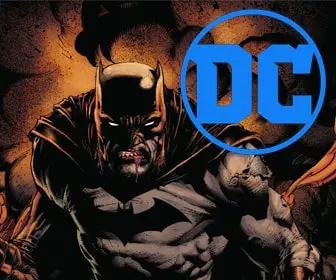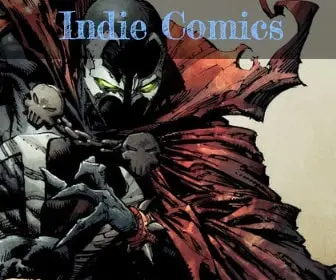
V for Vendetta: A Graphic Novel’s Impact
“V for Vendetta” is a gripping graphic novel that captures the imagination of readers worldwide. Created by the visionary writer Alan Moore and illustrated by the talented David Lloyd, this masterpiece stands as a towering symbol of political and social commentary. Set in a dystopian future, the story delves into themes of freedom, resistance, and the power of the individual against a tyrannical regime.
At its core, “V for Vendetta” is more than just a comic book; it’s a thought-provoking exploration of the human spirit’s resilience. The narrative follows the mysterious and charismatic V, a freedom fighter donning a Guy Fawkes mask, who ignites a revolution against the oppressive government. His journey, intertwined with that of Evey Hammond, a young woman caught in the crossfire of V’s rebellion, presents a compelling tale of courage and awakening.
As we delve into this article, we will uncover the layers of “V for Vendetta,” examining its historical influences, intricate characters, and the profound themes that make it a timeless piece of literature. Join us as we embark on a journey through the shadowy streets of this dystopian world, where the echoes of “Remember, remember the fifth of November” resonate with a message of hope and defiance.
Background
“V for Vendetta” emerges from a rich tapestry of historical and cultural influences. Set in a near-future Britain, the graphic novel paints a bleak picture of a society under the grip of a fascist regime. The story’s backdrop draws heavily from the political climate of the 1980s, a period marked by the rise of authoritarian governments and widespread social unrest. Alan Moore, the mastermind behind the narrative, channels his observations and fears of the era into a powerful critique of totalitarianism.
The dystopian world of “V for Vendetta” is a chilling reflection of what happens when power is concentrated in the hands of a few. The government, led by the sinister figure of Adam Susan, controls every aspect of life, from the media to the minds of its citizens. The parallels to George Orwell’s “1984” are unmistakable, with both works serving as stark warnings against the dangers of unchecked authority.
Amidst this oppressive environment, the seeds of rebellion are sown. The character of V represents the embodiment of resistance, a lone figure standing against the tide of tyranny. His actions set the stage for a dramatic struggle for freedom, igniting a spark of hope in a world shrouded in darkness.
As we explore the background of “V for Vendetta,” we gain a deeper understanding of its significance. The graphic novel is not just a story; it’s a mirror reflecting the anxieties and challenges of its time. It serves as a reminder of the fragile balance between security and liberty, a theme that continues to resonate in today’s global landscape.
Characters and Themes
At the heart of “V for Vendetta” are its compelling characters and the thought-provoking themes they embody. V, the enigmatic protagonist, stands as a symbol of rebellion and freedom. With his iconic Guy Fawkes mask, he challenges the oppressive regime and inspires others to question authority. V’s actions and philosophy raise important questions about the nature of justice and the price of liberty.
Evey Hammond, a young woman drawn into V’s world, undergoes a transformative journey. Her evolution from a frightened bystander to an empowered ally reflects the personal struggle and growth that can occur in the face of adversity. Through Evey’s eyes, readers experience the fear and hope that permeate the society under siege.
The antagonists, including the tyrannical leader Adam Susan and his enforcers, represent the cold machinery of the state. Their pursuit of control at any cost serves as a chilling reminder of the potential consequences of unchecked power.
The themes woven throughout the narrative are both timeless and timely. The struggle between freedom and security, the power of ideas, and the importance of individualism are explored with depth and nuance. “V for Vendetta” challenges readers to consider the values they hold dear and the lengths they would go to defend them.
In this section, we delve into the complex interplay of characters and themes that make “V for Vendetta” a captivating and thought-provoking read. The graphic novel’s exploration of these elements continues to resonate with audiences, highlighting its enduring relevance in the modern world.
Art and Visuals
The art and visuals of “V for Vendetta” play a crucial role in bringing the story to life. David Lloyd’s striking artwork is a key component of the graphic novel’s success. His use of bold lines and stark contrasts creates a dramatic and immersive world. The visuals not only complement the narrative but also enhance its emotional impact.
One of the most iconic elements of the artwork is the Guy Fawkes mask worn by V. This mask has become a symbol of resistance and anonymity, transcending the pages of the graphic novel to be used in real-world protests. Its design is simple yet powerful, encapsulating the spirit of rebellion that defines the character of V.
The use of color in “V for Vendetta” is also noteworthy. The predominantly dark palette reflects the oppressive atmosphere of the dystopian setting. However, splashes of red are used strategically to highlight key moments and themes, such as passion, violence, and sacrifice.
Symbolism is another important aspect of the visuals. From the recurring motif of the letter ‘V’ to the imagery of chains and keys, the artwork is laden with symbols that deepen the narrative’s meaning. These visual cues invite readers to delve deeper into the story and uncover layers of significance.
In this section, we explore the artistry and visual storytelling that make “V for Vendetta” a visually stunning and thought-provoking work. The collaboration between Alan Moore and David Lloyd results in a seamless blend of words and images, creating a powerful and unforgettable reading experience.
Impact and Legacy
The impact of “V for Vendetta” extends far beyond the pages of the graphic novel. Its influence on popular culture and political discourse is undeniable. The Guy Fawkes mask, in particular, has become a universal symbol of protest and dissent. It has been adopted by various movements around the world, from the Occupy Wall Street protests to anti-government demonstrations. This widespread use of the mask is a testament to the powerful message of resistance and individualism that “V for Vendetta” conveys.
The themes explored in the graphic novel remain relevant in today’s society. Issues of government surveillance, personal freedom, and the role of media in shaping public opinion are as pertinent now as they were when the story was first published. “V for Vendetta” continues to resonate with readers and activists alike, serving as a reminder of the importance of vigilance in the face of authoritarianism.
The legacy of “V for Vendetta” is also evident in its adaptations and references in other media. The 2005 film adaptation brought the story to a wider audience, introducing the characters and themes to a new generation. The graphic novel has also inspired countless works of art, literature, and political commentary, solidifying its place as a cultural touchstone.
In this section, we examine the lasting impact and legacy of “V for Vendetta.” The graphic novel’s enduring appeal lies in its ability to inspire and challenge readers, encouraging them to question authority and fight for their rights. As we reflect on its significance, it’s clear that “V for Vendetta” will continue to be a relevant and influential work for years to come.
Denouement
As we conclude our exploration of “V for Vendetta,” it’s clear that this graphic novel is more than just a story. It’s a powerful exploration of the human condition, a reflection on the nature of power, and a call to action. The journey of V and Evey, set against the backdrop of a dystopian world, offers a timeless message of hope and resistance.
The enduring appeal of “V for Vendetta” lies in its ability to speak to the universal desire for freedom and justice. Its themes of individualism, rebellion, and the power of ideas continue to inspire readers and activists around the globe. The graphic novel serves as a reminder that change is possible when people come together to challenge oppression.
As we close this chapter, “V for Vendetta” leaves us with a lasting legacy. It challenges us to think critically about the world we live in and the role we play in shaping it. The story of V may be fictional, but the issues it addresses are very real. In the end, “V for Vendetta” is not just a call to remember the fifth of November, but a call to remember the power of the human spirit to overcome adversity.












